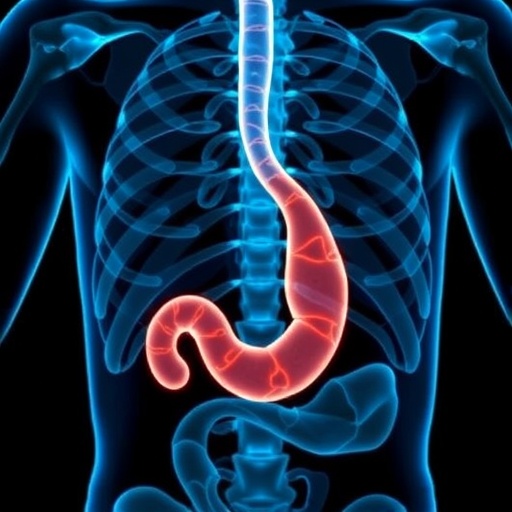
In a groundbreaking advancement in oncology, researchers have unveiled the results of the inaugural clinical trial employing a novel targeted therapy aimed at head and neck squamous cell carcinoma (HNSCC) in pet catsâan aggressive and notoriously treatment-resistant cancer. The study, recently published in the esteemed journal Cancer Cell, reveals that 35% of cats treated with this innovative drug achieved disease control with minimal adverse effects. This development is not only significant for veterinary medicine but also hints at profound implications for human cancer therapies, potentially revolutionizing treatment paradigms for HNSCC patients worldwide.
Head and neck squamous cell carcinoma presents a formidable challenge in oncology due to its aggressive nature and poor prognosis. The molecular underpinnings of this malignancy involve multiple cellular pathways, but among the most critical is the dysregulation of transcription factors involved in oncogenesis. STAT3 (Signal Transducer and Activator of Transcription 3) has emerged as a pivotal driver in many cancers, including HNSCC, where its aberrant activation promotes tumor proliferation, survival, and immune evasion. Until now, targeting STAT3 directly had been elusive, primarily due to its role as a transcription factor, which traditionally renders it âundruggableâ by standard therapeutic approaches.
The therapy investigated in this clinical trial is a STAT3-targeted cyclic oligonucleotide that functions as a molecular inhibitor, designed to selectively bind and block STAT3 activity at the transcriptional level. This innovative mechanism disrupts STAT3âs ability to promote oncogenic transcriptional programs, effectively throttling tumor growth and survival. The concept was initially conceived for human head and neck cancers but was adapted for this pioneering veterinary trial in an unprecedented approach that signals a paradigm shift in translational medicine, bridging the gap between veterinary and human oncology.
The decision to trial this new compound in feline patients stems from striking similarities between feline and human HNSCC in clinical presentation, histopathology, and immune response. These parallels make pet cats a compelling and underutilized model for cancer research, circumventing the limitations of traditional murine models that often fail to capture the complexity and heterogeneity of human tumors. By leveraging naturally occurring cancers in pets, scientists are poised to gain deeper insights into therapeutic mechanisms and drug efficacy in a living system ecologically closer to humans.
One vivid example underscoring the therapeutic potential is Jak, a nine-year-old black domestic shorthair cat diagnosed with advanced HNSCC and given a bleak prognosis of merely 6 to 8 weeks. Jakâs owner, Tina Thomas, enrolled him in the trial with hope and determination. Throughout a month of weekly treatments, Jak experienced marked symptomatic reliefâmost notably, reduction of a persistent watery eye attributed to tumor progression. Remarkably, Jak survived over eight months post-diagnosis, a testament to the therapy’s meaningful impact on quality and duration of life.
Safety profiles of oncologic therapies in veterinary patients are paramount, and encouragingly, the trial documented only mild anemia as a treatment-related side effect in a minority of subjects. Of the 20 cats enrolled, seven displayed either partial tumor regression or disease stabilization, with an average survival of 161 days following treatment initiation. These encouraging outcomes underscore the therapeutic promise and tolerability of the STAT3-targeted oligonucleotide in a clinical setting, paving the way for expanded trials and refinement of dosing regimens.
Mechanistic studies conducted on tumor biopsies and blood samples elucidated the dual actions of the compound: it not only abrogated STAT3 transcriptional activity but also induced upregulation of the immune checkpoint protein PD-1. The elevation of PD-1 suggests an enhanced immunologic response, potentially facilitating immune-mediated tumor control. This immunomodulatory effect adds a valuable dimension to the drugâs antitumor arsenal and opens avenues for combinational strategies with existing immunotherapies.
Senior author Daniel Johnson from the University of California, San Francisco Helen Diller Family Comprehensive Cancer Center emphasizes the broader implications of this research. âTargeting transcription factors like STAT3, historically deemed âundruggable,â is now becoming feasible, reshaping our therapeutic toolbox,â Johnson asserts. âFurthermore, utilizing naturally occurring cancers in companion animals enables us to glean more accurate predictive insights into human clinical outcomes compared to conventional murine models, which often oversimplify tumor biology.â
The study also highlights the strategic advantage of veterinary clinical trials in accelerating cancer drug development. Jennifer Grandis, the studyâs first author, remarks on the value of cross-disciplinary collaboration between veterinary and human oncology. âCompanion animals provide a spontaneous, complex disease model that better mirrors human cancer heterogeneity and microenvironment. This synergy allows simultaneous advancements in animal and human health,â she explains. Importantly, no cats were harmed, and many benefitedâa crucial ethical consideration that balances scientific progress with animal welfare.
Moving forward, the research team collaborates with a biotech startup to advance this novel STAT3 inhibitor through subsequent phases of clinical evaluation. Plans include parallel trials in human HNSCC patients, aiming to validate safety and efficacy comprehensively. This translational approach embodies a holistic âOne Healthâ perspective, wherein discoveries in veterinary medicine inform and expedite innovations in human healthcare.
The implications of this research resonate beyond HNSCC, as STAT3âs involvement spans numerous solid and hematologic malignancies. Successfully targeting this transcription factor could revolutionize treatment not only for head and neck cancers but also diverse tumor types driven by aberrant STAT3 signaling. Such a breakthrough exemplifies the potential of molecularly targeted therapies to deliver precision medicine with heightened efficacy and reduced toxicity.
Lastly, this trial underscores the importance of innovative research models amid constrained resources and the urgent need for more effective cancer treatments. It invites a reconsideration of how preclinical studies are conducted, sidestepping less predictive mouse models in favor of naturally occurring cancers in pets. This approach promises richer biological insights, more reliable therapeutic data, and ultimately improved outcomes for both animals and humans confronting cancer.
The convergence of molecular biology, veterinary science, and clinical oncology embodied in this study heralds a new era in cancer research. Through innovative targeting of STAT3 and astute utilization of pet cat models, researchers are charting novel paths toward conquering one of the deadliest forms of cancer, illustrating the power of collaborative, translational science to transform lives across species.
Subject of Research: Animals
Article Title: Safety and efficacy of a STAT3-targeted cyclic oligonucleotide: From murine models to a phase 1 clinical trial in pet cats with oral cancer
News Publication Date: 28-Aug-2025
Web References:
http://www.cell.com/cancer-cell
https://twitter.com/cancer_cell?lang=en
References:
Grandis et al., Cancer Cell, 28 August 2025, DOI: 10.1016/j.ccell.2025.07.015
Image Credits:
Tina Thomas
Keywords:
Head and neck cancer, Squamous cell carcinoma, Clinical studies, Medical treatments, Clinical trials, Drug studies, Cancer treatments, Cancer medication, Drug safety, Felines, Pet animals
Tags: cancer treatment paradigmsclinical trial results for feline cancersdrug development for aggressive tumorsfeline head and neck cancer treatmentimplications for human cancer therapyinnovative therapies for oncogenesisnovel oncology advancements in catsSTAT3 in cancer treatmenttargeted therapy for squamous cell carcinomatranslational research in cancer therapytreatment-resistant head and neck cancersveterinary oncology breakthroughs




